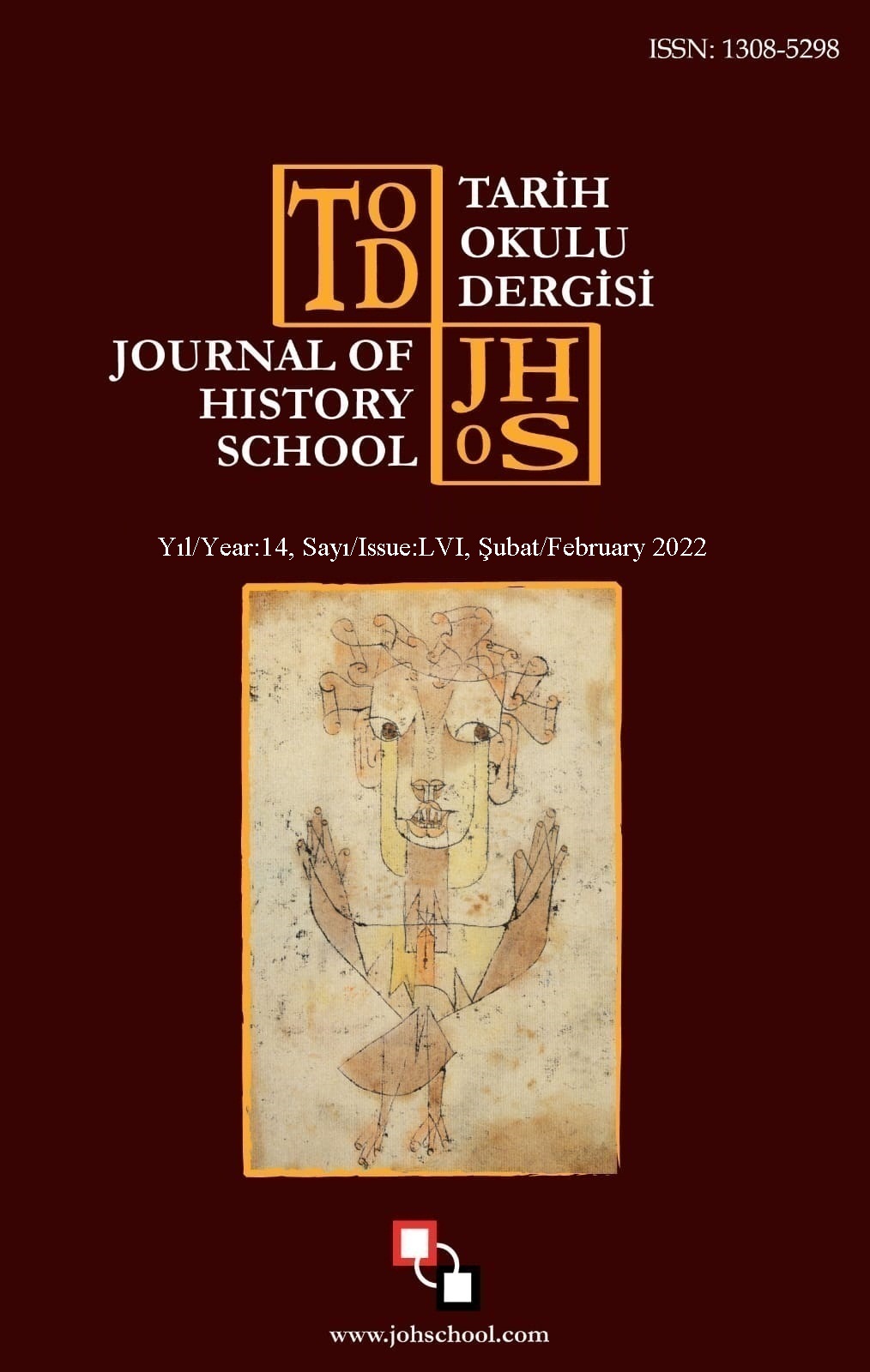Author :
Abstract
Felsefede en genel anlamıyla etkileme ve etkilenme kapasitesi olarak tanımlanan güç; değiştirme ve eyleme geçirme gibi etkileri anlatmaktadır. Sanat eserlerinin alımlayıcılara uyguladığı güç ise antik çağlardan itibaren bilinen ve tartışılan bir olgudur. Sanat iki boyutta; öznelerin fenomenleri tanımlaması ve onlar ile ilgili sunulan gerçeklikleri hakiki olarak kabul etmesi veya onlar üzerine düşünmesi veya duygulanması noktasında güç uygulama potansiyeline sahiptir. Sanat, siyaset ve din ilişkisinin tarihsel süreçte görüldüğü her yerde sanat eserlerinin bir güç unsuru olarak belirdiği ve bu gücü uygulamak için bilinçli bir şekilde tasarlandıkları görülmektedir. Sanatın özerkleşmesi sonrasındaysa sanat eserlerinin alımlayıcılara güç uygulamaya devam ettiği görülür. Bu çalışma sanat eserlerinin alımlayıcıların bedenlerine uyguladığı gücü duygulam ve duygulanım kavramları ekseninde incelemektedir. Duygulam kavramı alımlayıcı öznenin öznelliğinden bağımsız ortaya çıkarılmak istenen üretilmiş duyguları ve bedenin etkilenişlerini anlatmaktadır. Sanat bağlamında duygulanım kavramı ise eserde üretilen boşluklar ve belirsizlikler ile karşılaşan alımlayıcı öznenin yaşayacağı öznel duygularını anlatmaktadır. Duygulanımın açığa çıkması için gerçekleştirilen tasarımların alımlayıcı özneleri katılımcıya dönüştürdüğü ve bu sebeple daha demokratik bulunduğu da bilinmektedir. Bu durumda duygulam ve duygulanım sanatsal gücün farklı kategorilerde var edilişini tanımlayan kavramlar olarak belirirler. Sinema sanatını alımlayıcıların bedenlerini en fazla etkileme kapasitesine sahip sanat dalı olarak tanımlamak mümkündür. Duyusal motor duruma hitap eden sinema filmlerinin pek çoğu duygulamlar üretirken tam tersi durumda kristalleşmiş imgelerin hâkim olduğu sinema filmlerinde ise alımlayıcı öznenin belleğiyle de bağlantılı olan duygulanımların ortaya çıktığı kuramsal olarak ortaya konulmaktadır. Bu çalışmanın amacı sanat eserlerinin ve özelde sinema filmlerinin bir tasarım olarak gücü nasıl ürettiklerini teorik ortaya koymaktır. Bu teorik amaç ekseninde çalışmada literatür taraması yapılmıştır. Teorinin pratikle ilişkisiyse çalışmada amaca yönelik örneklem metodu ile belirlenen, yönetmen Tayfun Pirselimoğlu’nun ‘Yol Kenarı’ (2017) isimli filminin incelemesiyle gösterilmiştir. Film incelemesinde felsefi film çözümlemesi metodu kullanılmıştır. İncelemenin sonucunda filmin alımlayıcıya melez bir güç uyguladığı ve bir tasarım olarak açık yapıt özelliklerini taşıdığı ortaya koyulmuştur.
Keywords
Abstract
Power which is described as the capacity of influencing and being influenced in philosophy in the most general sense explains the effects such as changing and operationalizing. The power which artworks apply to the receptors is a phenomenon that has been known and discussed since the ancient ages. In two dimensions, art has the potentials which enables subjects to define phenomenon and regard the realities about them as rightful or thinking on them or apply power at the point of affectivity. In everywhere in which the relationship between art, politics and religion has been observed throughout the process of history, the artworks emerge as an element of power and they are consciously designed in order to apply that aforementioned power. After the autonomation of art, it is observed that artworks keep on applying power to the receptors. This study analyzes the power which artworks apply to the bodies of the receptors from the perspective the concepts of affect and affection. The concept of affect defines the interaction between the body and produced emotions which are desired to reveal independent from the receptor subject. The concept of affection within the context of art explains the subjective emotions of the receptive subjects who encounter with the gaps in the produced work and uncertainties. It is known that the designs which are designed to reveal the affection transform receptive subjects into participants and they are regarded more democratic. In that case, affect and affection emerge as the concepts which define the generation of artistic power in various categories. It is highly possible to define the art of cinema as a branch of art with the highest capacity of influencing the bodies of the receptors. It is theoretically revealed that majority of the movies which appeal to the sensorimotor status produce the affections while affections related to the memory of the receptive subjects emerge in the movies with the dominance of crystalized images on the contrary. The objective of this study is to academically reveal the way which artworks and movies specifically produce power as a power of designing. In the sense of this theoretical purpose, the literature review was conducted for this study. As for the relationship between the theory and practice, the movie of Tayfun Pirselimoğlu ‘Yol Kenarı (The Trackside)’ (2017) which was determined through the method of goal-oriented sampling was preferred. In the movie review, the philosophical film analysis method was chosen. At the end of the review, it was revealed that the movie applied a hybrid power to the receptor and had the characteristics of an open work as a design.
